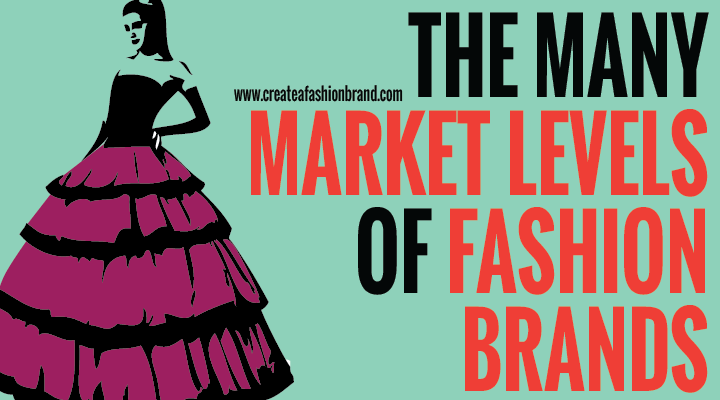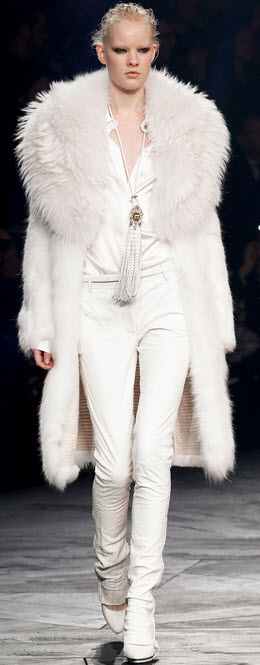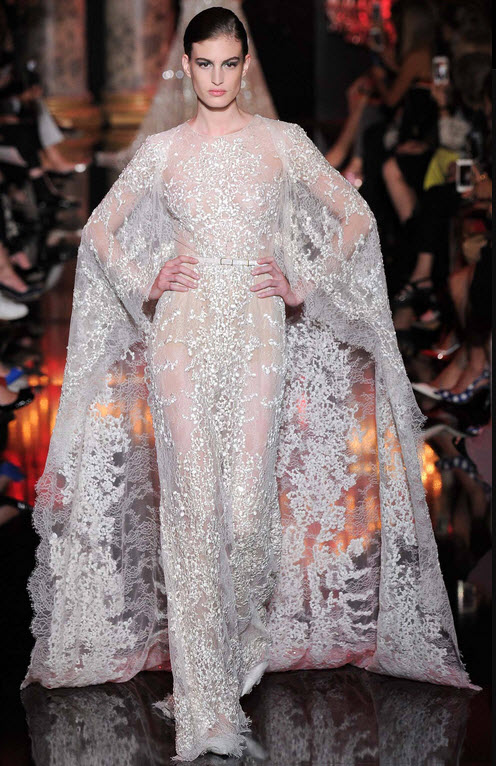Regardless of where you sell your products, you’ll need to decide on a market level for your brand. This will influence the materials you choose, price of the product and the choice you make in your range selection.
Any company that places itself in the Value Market will rely on huge sales volumes to create profit. Clothing is cheap, usually in the rage of US $5 – $30, and therefore the fabric and trims have to be low quality and cheap also..
In recent years the value market has moved from providing cheap basics, like plain T-shirts and vests, to a more fashionable garment for cheap cost and expanding into their own strongly marketed brands. Primark in the UK, is a value brand that has developed its marketing to promote itself as less value and more temporary fashion. Using its cheap fabric and trims as a selling point for replaceable, highly changeable fashion looks.
The next level up from value is the mass market high street. In this level of retail, consumers expect more quality from their products whilst keeping a cheaper price tag for basic items and moving through to a reasonable price for special items. The range can be fairly broad, between US $10 to anything up to $60, depending on the item.
Goods are manufactured in large volumes with a flagship store on the main high street in any city, as well as usually having a number of other stores located in the relevant shopping areas of that city also.
Design is usually pitched at the “everyman” fashion consumer, trying to sell to everyone, offering items that will sell quickly and make space for new designs and stock every 6-12 weeks
MID LEVEL HIGH STREET
Topshop, M&S

Mid level high street is probably the most underutilised and difficult market to sell in. It requires a lot of specific branding to firmly establish a very clear consumer market.
The products are neither cheap, which removes the appeal to those wanting throw away or value products, or the luxury market, which would see the items as low quality. However, if placed correctly, it creates some of the most loyal consumers there are today.
Products are clearly designed for the core customer in terms of materials, embellishments, shape, colour and style, and the business is very focused on every aspect of their customer in the way that it runs. This can include how quickly new items get added, where the shops are located and so on. The customer is offered a number of styles and trends every season that will appeal to each type of use, event or style. Price wise, products can range from US $20 – $150, with some occasional cheaper and expensive products added at relevant times.
Marks and Spencer is a very good example of this for the more mature customer and in recent years tried to increase sales by trying to attract the younger market. As the business was set up to cater for the needs, in every way, of the more mature core customer, this of course did not work.
High end high street are brands that again, focus on their core customer profile. They have a very defined style and aesthetic. They usually focus on one or two types of style or trend that aligns with their customer per season and will focus on one or two types of event ranges, such as evening and day wear, rather than the mid and value which will try to cater for everyone, in every situation possible.
The price and quality of these brands depend on the consumer but tend to be very high for the high street. As well as their core customers, they will also have a range of customers that choose to shop there for special products or occasions. Typically the products are in the range of US $40 – $500, although this can go higher for some specialist items.
DIFFUSION BRANDS
Marc by Marc Jacobs, Vivienne Westwood Red Label, Moschino Cheap and Chic
Diffusion brands are secondary lines that have been developed by the luxury market to create a cheaper range of products, more in line with High End High Street brands, to attract a secondary consumer or those who will try the brand at the cheaper price and become fans of the higher luxury brand in the future.
Generally the business model works similar to that of the main luxury brand itself in terms of collections per year, shop location and marketing, but offers a cheaper alternative to their main ranges. The design is usually based around the main luxury range, but watered down in terms of fabric, embellishment or some other cost and is far more wearable as it tends to be a little more reserved. However, the products are not cheap and still range between US $80 – $700
LUXURY BRANDS – READY TO WEAR [RTW]
Marc Jacobs, Dior, Chanel, Moschino
Most large luxury fashion brands today, start with a Ready To Wear collection at least twice a year. These collections are based on trend prediction information although the brand will usually take one element of a trend and develop it into its own theme.
Unlike all other retailers below them, RTW is the first area where, going completely against trend, is still not encouraged, but accepted. It is also assumed by the general public, that these collections create trend predictions, whereas they actually just highlight which colours, shapes or details from the prediction information, retailers need to be focused on due to the additional RTW press.
Products are usually a mixture of day and evening and can span between more formal clothing or very casual, depending on the collection theme and the brand’s style. Product price is very varied and some designers like Marc Jacobs and Vivienne Westwood choose to also show their diffusion range lines. Because of the difference between the different collections, price here can be difficult to generalise, but most items will be between US $200 – $5000 with very lavish evening wear going up to 10 times that amount.
HAUTE COUTURE
Dior, Gucci, Prada
Haute Couture is a very old Parisian based type of collection. Each collection is usually associated with a RTW brand so does not create separate brands of its own although this in theory could be possible.
To have a couture line, you have to be chosen by Chambre Syndicale de la Haute Couture, as the right to do couture is actually protected by French Law. There are a number of regulations that you need to meet in order to be considered [If you are interested in these regulations, you can read Doing Couture? Why you might be breaking the law].
Price is not a factor for this type of business, only that each item will be of extremely high cost due to the handmade nature of the products and the quality of the work. The products are not bulk made or by a factory and can be customised to each consumers requirements.
HANDMADE
Koncept, Etsy, Craftsy,
Handmade products are a different type of Brand model to the ones listed above. They are however, not made in bulk by a factory and although the components may be bought in bulk, the products are assembled, or crafted from scratch by hand. The quantity of each item is usually less than 30, depending on the product, although there are some factories that specialise in bulk handmade goods. The main element other than the handmade production, is that each of the products is designed by the brand and sold, rather than customisable by the consumer, although many brands d take commission projects on is asked.
Usually these businesses focus on quality rather than quantity and charge premium price for their handmade craftsmanship. They usually prefer to sell at craft markets, events or online to save costs, but can expand to small boutiques if they can produce enough stock. Online services like Etsy and Folky provide a dedicated shopping site for these types of brands.
These brands can range from one person to a group of people but are usually preferred by single creative people to gain a following when starting out. The products can cover any type of product and any price, depending on what is involved during production.
Handmade brand, usually because they are small companies or single people, don’t always follow health and safety or legal regulations of products due to their lack of knowledge on the subject, but should be doing so as they are bound by the law like everyone else.
BESPOKE / MADE TO MEASURE
Made to Measure is becoming a very popular market, mainly in the menswear sector. Tailor made shirts and suits are becoming very easy to find on the internet. The products for each type are tailored to the consumers needs including fabric, stitching and design.
Most internet companies are not bespoke as they claim to be, as they only ask for set measurements and receive the product without any fittings or toils being made. The product pattern is adapted from a standard garment sized block, with some adjustments made to fit the consumer’s measurements and usually the product is factory made, which actually makes the product Made to Measure, not a bespoke one.
However, they have been accepted as “bespoke” by the general public due to a lack of understanding by the consumer on the different meanings. Since the measurements are specific to the consumer and they buy the product on an individual basis, it is assumed that they are bespoke.
Bespoke was traditionally more in line with Haute Couture, in that the garments were made by hand, fittings and toils would need to be tried on a number of occasions and each pattern was made from scratch to fit the consumer perfectly.
With more Made to Measure companies in physical stores offering similar services, the two terms have become blurred and now the difference between the two is really more about the whether the pattern drafting is adapted, or made from scratch.
If you are thinking about either option of the two, be aware that this is a very time-consuming and expensive brand model with little profit, especially if you are planning on being bespoke, as you will need physical premises and will only be able to serve the customers willing to travel. It is also important to note that with so much cheap fast fashion now, the option of bespoke is usually reserved for those with deep pockets, the military who have their own tailors or for special occasions like weddings.
If you’re thinking about starting a fashion brand or maybe expanding your business, I’ll be covering each market level more closely and looking at the pros and cons of each type, in the coming weeks.
We want to help as many people as possible and without your help, we can’t reach them. So if this post has been helpful to you, then I’d really appreciate it if you share it with others to help them too, using the share buttons below.




